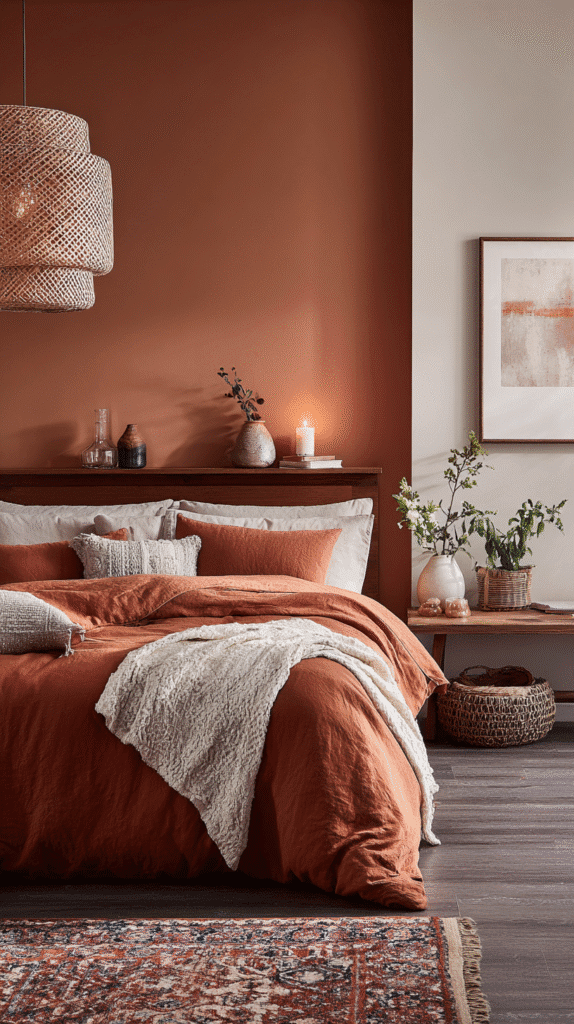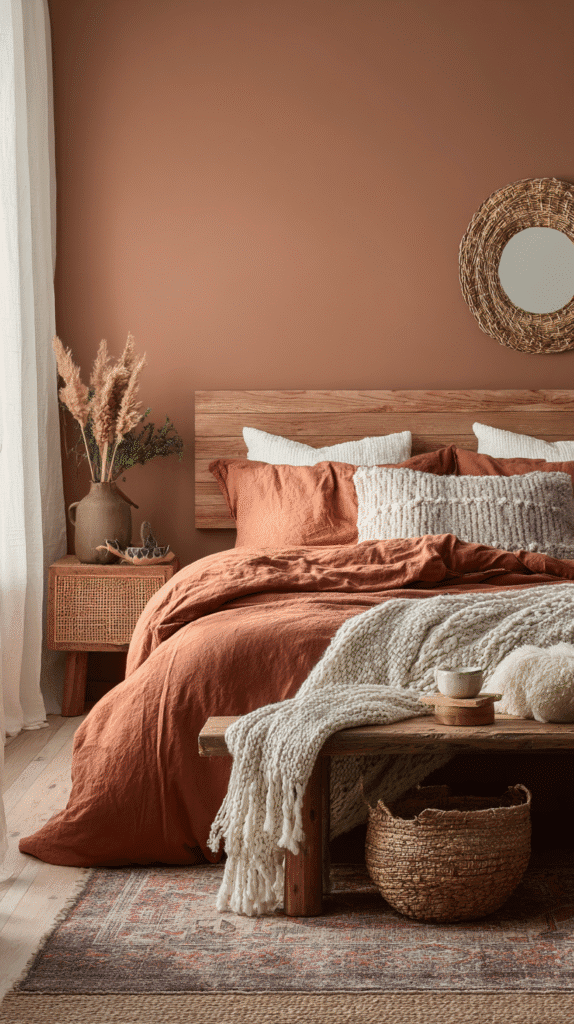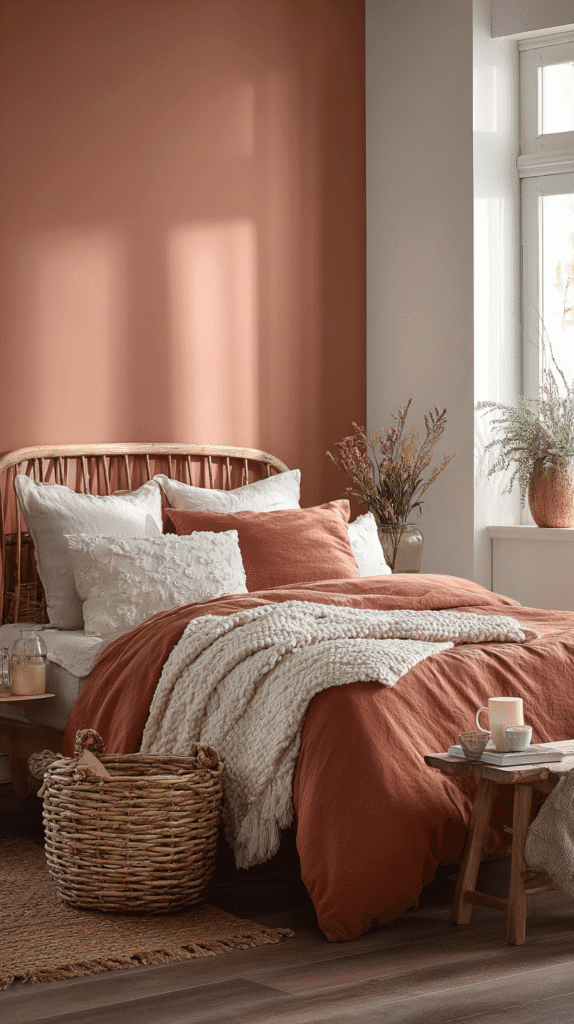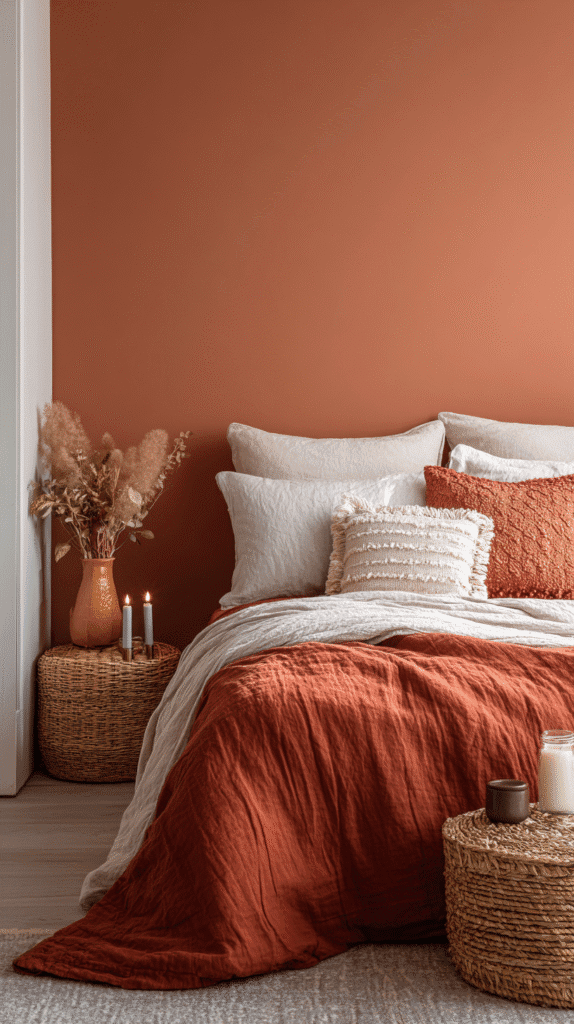
Introduction: Warm Up Your Sanctuary
In the bustling dance of modern life, your bedroom is your sanctuary—a space where relaxation is not just a happenstance but an intentional design. Choosing the right paint colors can transform this vital area into a warm and inviting retreat. As we look towards 2026, with trends emphasizing coziness and personal expression as per Pinterest Predicts, painting your bedroom walls in warm tones remains a timeless choice that invites comfort and style. So how do you pick the perfect palette? Today, I’ll take you through selecting colors that flatter your surroundings, boost your mood, and align with the hottest trends.
Understanding Color Psychology: Creating an Inviting Atmosphere
Before dipping your brush, consider the emotions you want your room to evoke. According to research on color psychology, colors profoundly influence mood and behavior.
For instance, shades of warm colors like soft terracotta, muted gold, and deep coral can create a space that feels cozy and energizing. Benjamin Moore’s Terracotta Tile has recently been popular, reflecting a growing trend in earth tones which dominate the Pantone forecast as well. These warm colors can craft an enveloping warmth that mimics the golden hour—perfect for your wind-down moments.
Contrast this with cool colors like pale blues and icy greys, which, while serene, may not evoke the fuzzy warmth we’re aiming for. A mixture of sage or mustard tint balances the energy, offering a pastel glow that remains neutral yet inviting.

First Steps: Choosing Your Ideal Warm Paint Palette
Start by identifying a focal point—perhaps it’s a statement headboard or an exquisite piece of art. Use this as inspiration to choose complementary or analogous color schemes. Consider using Sherwin-Williams paint, where a gallon can range from $40 to $100 depending on the finish and quality.
Here’s how it plays out: Suppose you love the look of an antique pine bed with brass accents. You might opt for the rich, warm undertones of a paint color like ‘Dover White,’ which effortlessly blends a hint of warmth into a classic white. Layering shades of taupe or mocha can then add dimension and depth.
Narrative Comparison: Deciding Between Popular Warm Hues
Imagine you’re standing before two alluring paint samples on your wall. On one side, there’s Spice Berry—a luscious red-orange hue that whispers hints of sunset and nostalgia. On the opposite, there’s Parchment—a creamy, off-white that wraps your senses in a cocoon of warmth and softness.
Choosing between these might feel like picking a favorite child, each color telling its own story. Spice Berry makes a bold statement, perfect for vibrant personalities and rooms with plenty of natural light. Parchment, on the other hand, is subdued, offering tranquility without overwhelming the senses. Pairing this with amber LED lights can further enhance its warming qualities.

Trend Forecasts: Future-Proofing Your Warm Bedroom
As we look beyond the horizon, the 2026 trend forecasts point towards maximalism with a preference for bold patterns intertwined with warm tones. Sites like Houzz are teeming with predictions that jewel tones like garnet and emerald will feature prominently, but always balanced by earthy shades to ground the vibrancy.
Consider integrating these trends in small but impactful ways—perhaps an accent wall or utilizing wallpaper with a warm undertone that contributes to a dynamic color narrative. Brands like Farrow & Ball have delighted with unique shades like ‘Dead Salmon’—a warm pink-brown that flexibly adapts to both traditional and contemporary spaces.
DIY Tips: Painting Like a Pro
For those tempted by the thrifty charm of DIY, painting your bedroom walls doesn’t have to be an ordeal. Here’s how you make it seamless. First, always test paint samples in different lighting conditions. Use tester pots, usually available for under $10, to see how colors shift from morning to evening.
Next, invest in quality brushes and roller covers—Purdy and Wooster offer good ones around the $15 mark. This ensures even application and a polished finish. Practice patience; remember, thin, multiple coats often yield the best results compared to a single, sloppy layer.

Common Mistakes to Avoid When Selecting Paint Colors
The path to a warm bedroom can have its pitfalls—fear not, we’ll navigate these together. One common mistake is disregarding light sources. South-facing rooms bask in warm light, meaning they naturally enhance red or orange tones. In contrast, a north-facing room might wash out colors, necessitating deliberately warmer choices.
Another slip-up? Ignoring undertones. A beige with a green undertone in a floral-patterned room can clash rather than charm. Consistency in undertones across furniture and fabrics will stitch together a cohesive look.
Conclusion: Embrace Warmth With Confidence
Creating a warm bedroom involves more than just painting walls; it’s about crafting an inviting narrative that speaks to your personal story. By thoughtfully selecting paint colors that resonate with warmth, you create a space that feels uniquely yours—a testament to your style and sanctuary. Whether you lean toward bold and vibrant or soft and subtle, here’s to designing a bedroom that embraces and rejuvenates, night after night. Feel empowered to let your walls tell the cozy story of your life, guided by paintbrush strokes and a heart focused on comfort.
